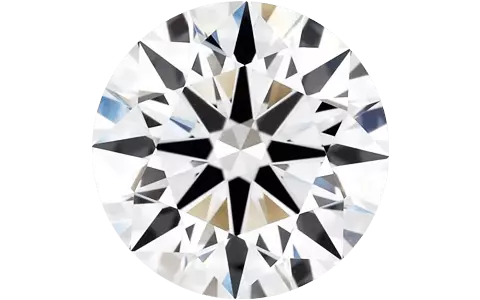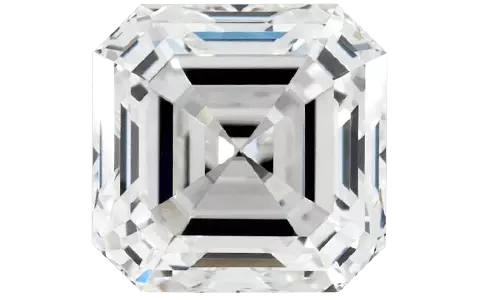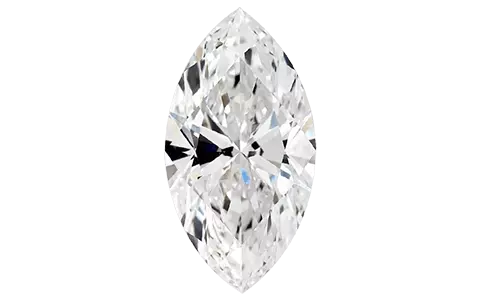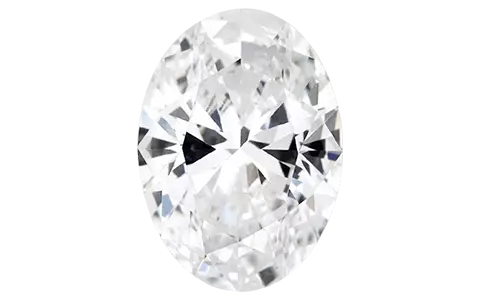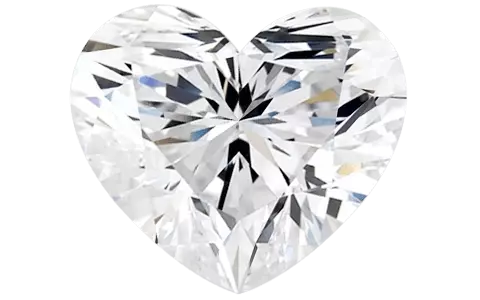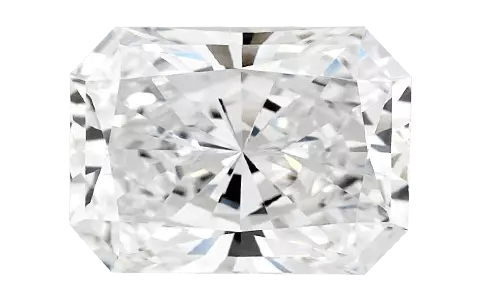Why buy loose diamonds?
Typically, people buy loose diamonds when they have a particular design in mind for a customized jewellery piece or when they want to set the diamond in an heirloom jewellery. Additionally, loose diamonds can be bought if one is uncertain about the preferred ring style of their partner. This option allows for the purchase of a diamond to prevent it from being sold elsewhere, and provides the opportunity to take time to decide on the final ring style.
What are the most common loose diamond shapes?
The most popular lab and natural loose diamond shape is without a doubt, round diamond. Other common loose diamond shapes are: oval, emerald, pear and cushion.
Can you share some online loose diamond buying tips?
To ensure you make an informed decision when purchasing a diamond, it's important to familiarize yourself with the four C's: cut, colour, clarity, and carat.
After narrowing down your options, select at least three of these criteria that are most important to you. Contact online jewellers or gemologists to request an estimate, specifying whether you prefer a lab-grown or mined diamond, your desired cut grade, colour grade, clarity grade, and carat weight, and the date you plan to make the purchase. Save time by requesting estimates for the specific diamond you have in mind.
Finally, make sure your jeweller provides a trusted diamond report, so you have complete clarity on what you're purchasing before making a final decision.
For free no-obligation consultation book an appointment with our diamond expert.
Should I compromise quality for a bigger size diamond?
Although size may be appealing, it's important to prioritize the quality of certain diamond characteristics when selecting a diamond. Factors such as the diamond's cut and colour are critical in determining the stone's beauty and achieving the brilliant, shimmering effect that you desire. It's possible for a diamond to appear large but have a low-cut grade, which means that it will lack luster and appear dull despite its size. Similarly, a low colour grade can result in a yellow or brownish appearance, rather than the bright, colourless look that is typically sought after. To make the right choice when selecting a diamond, it's important to learn more about the different characteristics and factors that influence its beauty.
Explore the 4Cs – Cut, Colour, Clarity & Clarity.
Why Moh recommend GIA certified diamond?
We ensure that the natural diamonds we personally choose are verified by the Gemological Institute of America (GIA) for certification. The GIA is a non-profit, independent grading laboratory, internationally recognized as the foremost authority on diamonds and coloured diamond. They provide objective evaluations of diamonds, utilizing a highly critical grading system. This comprehensive and rigorous grading system ensures that a GIA diamond is never over-graded or overpriced, but rather impartially awarded grades that accurately reflect its unique characteristics. Each natural diamond selected by Moh is GIA certified and has a specific identification code inscribed on its girdle, which is only visible under magnification. Additionally, the diamond comes with an accompanying GIA certificate.
Learn more about certification here.
Should I buy a diamond online?
Although some prefer to examine diamonds in person before purchasing, we understand that this isn't always feasible or convenient for everyone. As a result, we have transitioned our services online to allow people to browse, compare using 360-degree diamond videos, and purchase diamonds from anywhere, regardless of their location or busy schedule.
When purchasing a diamond online, it's crucial to have confidence in your choice and the seller. At Moh, we handpick each diamond featured on our website based on its credentials, stunning aesthetics, and exceptional value for money. This means that every diamond available for selection has already undergone a meticulous vetting process, ensuring that no matter which one you choose, you will receive a true beauty.
Our dedication is aimed at providing you with peace of mind when purchasing a diamond or jewellery online. From sourcing ethically-mined diamonds to offering a hassle-free return policy and free lifetime aftercare to maintain the beauty of your diamond jewellery, we are committed to your satisfaction.
For additional guidance on finding the best diamonds online and knowing what to consider before making a purchase, please refer to our FAQ section.
How can I view a diamond I find online in-store?
If you come across a diamond online that match your interest and wish to examine it in person, we can facilitate this for you. Simply schedule an appointment and provide us with either the GIA or IGI number of the diamond or inform us of its grades.
We update our diamond inventory every day, so any diamond you come across on our website should still be available. However, please bear in mind that on occasion, the diamond you wish to view may have already been sold. In such situations, our gemologists will assist you in finding suitable alternatives within your budget.
Is there a way to ensure that the diamond I purchase online is the exact same diamond that will be delivered to me?
Both GIA and IGI diamonds have a unique and very small code inscribed on the girdle of the diamond. This code is provided to you along with other diamond details when you make an online purchase. Although not visible to the naked eye, you can use a 50x magnification to view this code and cross-check it with the GIA or IGI certificate you will receive. If you are collecting the diamond in person, we can show you this code under a microscope. Alternatively, you can approach a jeweller near you and request to see the diamond under their microscope.
It is always recommended to conduct research before buying a diamond online and only purchase from trustworthy and highly-rated jewellers. If you are unsure, it's advisable to speak with a customer care representative.
Our customer care team is available on weekdays from 9 am to 6.30 pm via phone, email, and live chat. Don't hesitate to contact us for further information.
What should I look out for when buying a diamond online?
To begin your diamond search, the first step is to determine whether you want a natural diamond or a lab-grown diamond and then apply the relevant filter. Once you have decided, proceed to filter your search further by looking for diamonds with the following ideal grades:
Cut: Excellent to Very Good. Please note that only round diamonds receive a cut grade, so for other shapes, use the same standards for polish and symmetry grades.
Colour: D to G (or H to J for yellow gold rings)
Clarity: VS2 to SI1
This filtering process will enable you to discover exquisite diamonds at the best possible prices. However, ensure that the diamond you ultimately choose has been certified, preferably GIA certified for natural diamonds or IGI or GIA certified for lab-grown diamonds.
What are the 4Cs of diamond grading?
The grading of diamonds is based on several characteristics, with the most significant being referred to as the 4Cs. These are:
Cut - Refers to the precision of the diamond's cut, which can impact its sparkle. A better cut leads to better sparkle.
Colour - Refers to the absence of trace element colors such as yellow or brown. A diamond with better color appears whiter.
Clarity - Refers to the extent of natural imperfections in the diamond, known as inclusions. Higher clarity implies a clearer stone.
Carat - Refers to the weight of the diamond, and it is typically the most influential factor in determining its price.
Explore more about diamonds and the 4Cs by referring to our Diamond Basic guide.
How to store loose diamonds?
For safe storage of your diamond, it's recommended to wrap it in a soft cloth and place it in a dry container away from harsh chemicals and humidity. If you have multiple loose diamonds, it's best to wrap each diamond separately to prevent scratches.
How to clean loose diamonds?
Avoid using harsh chemicals like bleach or chlorine as they can cause discoloration to your diamond. Professional cleaning is an option, but ensure that their methods are non-abrasive and chemical-free. If you prefer to clean your diamond yourself, use warm water, soap, and a soft-bristled toothbrush for best results.
What is the most popular shape for engagement ring?
The round brilliant cut is the leading choice for engagement rings and makes up 75% of all diamonds sold today. This cut is highly coveted for its ability to reflect light with exceptional brilliance and create a fiery sparkle.
Does the shape of a diamond affect the quality?
In most cases, the shape of a diamond does not affect its quality. However, the way a diamond is cut can have a significant impact on its beauty, brilliance, and value. To learn more about diamond cuts, please click here.
How to identify a real diamond and fake diamond?
There are various methods to determine if a diamond is genuine. Some require the expertise of a trained eye to detect imperfections, which paradoxically indicate the authenticity of a diamond. However, a simple and effective method to test a diamond's authenticity is to drop it in a glass of water. A genuine diamond will sink to the bottom, while a fake one will float near the middle or top.
What is conflict free diamonds?
The term "conflict-free diamonds" refers to diamonds that have been intentionally chosen for their ethical and environmentally responsible origins.
How important is diamond certification?
Diamond certificates from the Gemological Institute of America (GIA) or International Gemological Institute (IGI) provide assurance of the value and quality of your diamond. These organizations are considered the gold standard in diamond grading, and their reports provide a comprehensive description of each diamond's essential characteristics.
Are lab grown diamonds real?
Yes! Lab-grown diamonds are 100% genuine diamonds that are produced in a laboratory environment using conditions designed to simulate the natural diamond formation process.
How much cheaper is a lab grown diamond compare to mined diamonds?
Lab-grown diamonds are generally priced at a 40% to 70% discount compared to natural diamonds. This is primarily due to the efficiency and cost-effectiveness of the lab-grown diamond creation process, as opposed to the mining process required for natural diamonds.
What is the difference between Lab-diamonds and Natural diamonds?
If you require additional assistance, our specialists are available to provide a detailed comparison of natural and lab-grown diamonds.
- Lab-grown and natural diamonds can have the same high-quality cut, colour, and clarity grades.
- Lab-grown diamonds are genuine diamonds, identical to those formed naturally.
- Compared to natural diamonds, lab-grown diamonds are typically 70% to 80% less expensive.
- For the same budget, a lab-grown diamond can provide a significantly higher carat weight than a natural diamond.
- The future value of lab-grown diamonds is volatile and uncertain, whereas natural diamonds generally retain their value over time.
- Lab-grown diamonds require much less land use than natural diamonds.
Although creating a lab-grown diamond consumes a lot of energy, advancements in technology are reducing the energy requirement. Many lab-grown diamonds are now produced sustainably using solar power.
Lab-grown diamonds are created in a matter of weeks, while natural diamonds take billions of years to form.
It's impossible to distinguish a lab-grown diamond from a mined diamond without specialized equipment.
Lab-grown diamonds are not fake diamonds or diamond simulants; they are authentic diamonds.
Unless you purchase a blood diamond, natural diamonds are not unethical. The UN's Kimberley Process has made it almost impossible to obtain blood diamonds.
What is the best certification for lab grown diamonds?
The top certifications for lab grown diamonds are IGI and GIA. While IGI offers a more comprehensive grading system for lab diamonds, GIA provides broader grade ranges for features such as colour grade. GIA is widely considered the most prestigious and trustworthy grader of diamonds worldwide, especially for natural diamonds that undergo thorough grading.
Why are lab grown diamonds so cheap?
It is a widely held belief that lab-grown diamonds are significantly cheaper than natural diamonds, but this is not entirely accurate. Although lab-grown diamonds are less expensive than natural diamonds, they still require a substantial investment because, after all, a diamond is a diamond! Lab-grown diamonds are genuine diamonds, and they are equally dazzling and stunning. Although the process of creating lab-grown diamonds is efficient, it necessitates the use of cutting-edge technology and top scientific experts, which incurs expenses. Additionally, lab-grown diamonds are still relatively scarce. The rarity, beauty, and demand for lab-grown diamonds are all factors that contribute to their price point.
Do lab grown diamonds come in different colours?
It is indeed possible to produce lab-grown diamonds in various fancy hues, such as yellow, blue, pink, orange, green, red, and black. In natural diamonds, the presence of trace elements, such as boron in blue diamonds or nitrogen in yellow diamonds, causes coloration in an otherwise pure carbon diamond. Similarly, in lab-grown diamonds, the addition of the precise amount of trace elements during the diamond creation process can result in the desired colour.
How long does it take to make a lab grown diamond?
The formation of lab-grown diamonds usually takes approximately 2 to 4 weeks. However, the duration can be shortened by introducing other elements, such as nitrogen. Nonetheless, this approach may result in a yellowish tint in the resulting diamond. This colour can be eliminated by specific process to make it near colourless lab-diamonds.
Do lab-diamonds last forever as natural diamonds?
Certainly, a lab-grown diamond can endure just as long as a natural diamond. The composition of a lab-grown diamond is identical to that of a natural diamond, and both rate a 10 on the Mohs hardness scale, rendering them the most durable naturally occurring substance on the planet. This extreme hardness protects them from scratches, abrasions, and breaking.

